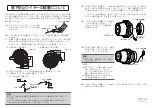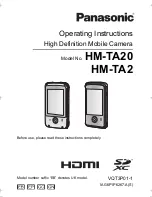
Compliance, safety, and intended use
22
Alvium USB Cameras User Guide V3.1.3
GPIOs
To avoid damage to the camera, keep maximum input voltage below 5.5 VDC and
maximum current below 12 mA per output. See
details. The maximum length for I/O cables must not exceed 30 meters.
Reverse polarity
If Alvium USB cameras are externally powered with reverse polarity, the cameras
can be damaged. See
on page 116 for proper
external power connections.
JST-cables
JST I/O cables without shielding are designed to be used with bare board or open
housing Alvium cameras. The customer is responsible for an EMC compliant
design. For applications without an additional EMC housing, please use shielded
JST I/O cables with screw lock.
Ground loops
Unsuitable connections can lead to different potentials between the camera
system GND and the environmental shield/chassis GND caused by ground loops.
This can damage the camera and the connected devices or cause malfunctions.
•
Avoid potential differences between the camera housing and GND.
•
All wiring must be done by authorized personnel, according to the
corresponding technical standards.
•
Read the Avoiding Ground Loops in Vision Systems application note.
USB connections
USB 3.0 and 3.1 Gen 1 host controllers and hubs
To avoid damage to USB 3.0 or 3.1 Gen 1 host controller cards or hubs, make sure
these components provide sufficient current supply for the connected cameras.
For suitable USB 3.0 accessories, see the Alvium Cameras Accessory Guide at
www.alliedvision.com/en/support/technical-documentation/
alvium-usb-documentation
under Additional documents.
If suddenly your camera is not recognized anymore, check for a crashed USB hub.
Disconnect the USB and power supply cable from the hub. Reconnect both.
More information
See the Avoiding Ground Loops in Vision Systems application note at
www.alliedvision.com/en/support/technical-documentation/
alvium-usb-documentation
under Additional documents.
i
















































